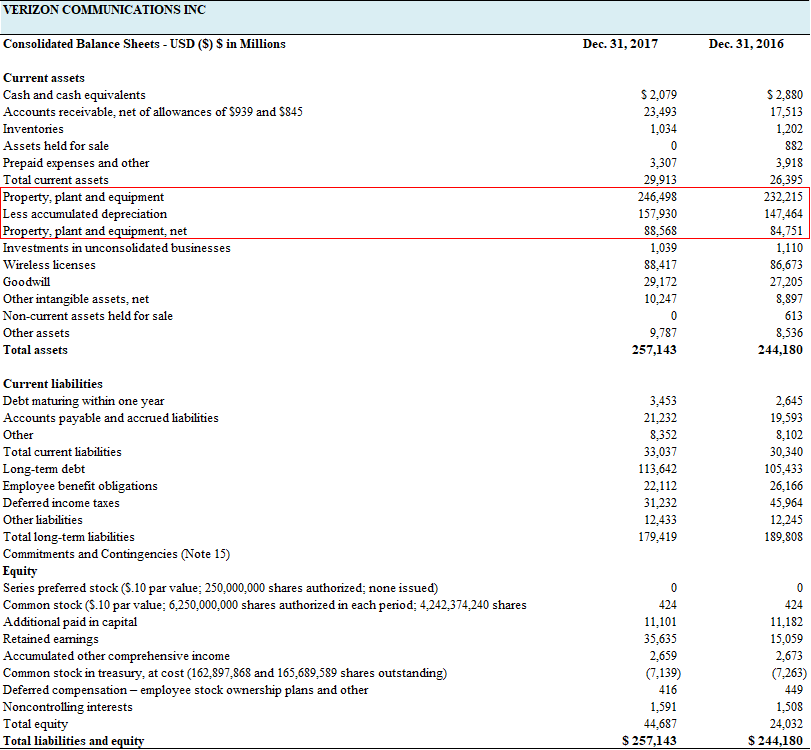What Is Reconciliation in Accounting? Definition, Types & Steps

With QuickBooks Enterprise, business owners can set up volume discounts and customize pricing rules according to sales rep, item category or customer in the Platinum plan and up. The same plans help speed up the inventory count process by allowing businesses to use mobile devices as barcode scanners. And unlike some competitors that only track single inventory items, QuickBooks Enterprise lets you track inventory parts plus assemblies.
Data Protection and Encryption

Parent companies use this to bring together all the accounts and ledgers from the subsidiaries they may have. The process looks for mismatches both within and between any of the subsidiaries. Budget https://www.business-accounting.net/how-to-read-large-numbers-on-financial-statements/ controllers can keep a tight leash on spending through this match-making exercise. They’ll check that the invoices your company must pay mirror the goods or services you took delivery of.
- While proper reconciliation is the standard for how law firms should handle all financial accounts, it is particularly important—and often required—for the management of trust accounts.
- Organizations require powerful capabilities, designed and built by experts, which encode years of experience, knowledge and best practices, all available at their fingertips.
- Period reconciliations are important to be carried out to find out any discrepancies in the accounting record and to be able to correct them regularly.
- After checking for deposits or charges that have not been reflected, you then check for any error from the bank’s side in relation to completed transactions that are reflected in the bank account statement.
- In the following post, we’ll cover the crucial types of reconciliation for legal professionals and delve into the fundamentals of three-way reconciliation accounting.
Prepaid assets
During his time working in investment banking, tech startups, and industry-leading companies he gained extensive knowledge in using different software tools to optimize business processes. Some of the popular features of this type of software include automated review and approval of accounting workflows, reconciliation templates, predetermined checklists to standardize the whole process. The documentation review method looks to be a tiring process but automation software how to prepare a post closing trial balance that pulls records and documents from various sources through integrations and APIs exists. Rather than manually sifting through records, this technology helps you save time and energy. This method involves direct comparison of documents, statements, or transactions and an absence of this review evidently makes the company lose money. Another factor that seems to be unavoidable, no matter how diligent your accounting team is, is the total boycott of a transaction.

Reconciliation for businesses
While account reconciliation software can save you time, an accountant should double-check everything to ensure accuracy. Account reconciliation focuses on ensuring your financial records are accurate and error-free, so having a process to follow is vital. Account reconciliation can also indicate fraudulent activity, whether it’s through unauthorised financial activity such as using the company credit card without permission or edited invoices.
Also, if your business is small and you’re just starting out, reconciling your own accounts can be a valuable learning experience. Bank errors don’t occur very often, but if they do, the proper amount needs to be added or subtracted from your account balance, and you should contact the bank immediately to report the error. Account reconciliation software presents you with integrated cloud storage for supporting documentation, which boycotts the need to import documents and aids the review and audit process.
The allowance for obsolescence and the inventory valuation at lower of cost or market are reconciling items to consider in the inventory recording and reconciliation processes. Accounting software automation and adding a procure-to-pay software, like Planergy, can streamline the process and increase functionality by automatically accessing the appropriate financial records. If your AR balance is $60,000, but you only have $40,000 in invoices that are due, your net profit will be overstated and you’ll be paying taxes on income that you’ll never receive. Keeping your accounts reconciled is the best way to make sure that your balances are accurate and an important part of ensuring adequate financial controls are in place. While the reconciliation process remains the same, with two sets of documents compared for accuracy, the difference lies in what is being reconciled. The accountant of company ABC reviews the balance sheet and finds that the bookkeeper entered an extra zero at the end of its accounts payable by accident.
These issues typically happen due to timing differences, missing entries, etc. By prioritizing reconciliation in accounting, lawyers and law firms can maintain financial accuracy and compliance, but that doesn’t mean that lawyers need to spend hours each day looking at accounts on paper or in Excel. By leveraging technology for more efficient reconciliation processes, lawyers can save time and greatly reduce the chance of error. By catching these differences through reconciliation in accounting, you can resolve discrepancies, help prevent fraud, better ensure the accuracy of financial records, and avoid regulatory compliance issues. It not only allows you to protect your clients’ funds, but your firm too as a result. Depending on the number of discrepancies, you may need to create a supporting schedule that details the differences between your internal books and bank accounts.

Experience the benefits of precision, efficiency, and time savings in your financial operations. Reconciliation is vital for monitoring business spending, providing insight into financial cycles, and preventing surprises. Accurate information reduces the risk of missing deposits or accidentally overdrawing accounts, allowing for better budgeting. Working with the former accountants now working at FloQast, we decided to take a look at some of the pillars of the accounting professions. FloQast’s suite of easy-to-use and quick-to-deploy solutions enhance the way accounting teams already work. Learn how a FloQast partnership will further enhance the value you provide to your clients.
This method can highlight how a company’s current finances compare to those made from historical data, as significant differences can flag irregularities. Inaccurate records mean your business doesn’t have a clear picture of its financial health, which can impact current and future growth. This article explores account reconciliation, why all businesses should use it, and the different types to consider. Parent companies carry out this type of reconciliation for their subsidiaries. It allows parent companies to consolidate the general ledgers of all their subsidiaries and identify and eliminate any intercompany flows that might arise in loans, deposits, and invoicing transactions.
Also included with every plan is Sage’s own cybersecurity offering, which will keep tabs on your business credit score and monitor for data breaches. Business owners working in construction or manufacturing may be especially drawn to Sage 50’s advanced inventory, job costing, reporting and budgeting capabilities. Ensure that amounts recorded by the Accounts Payable ledger match the bank statement history for the amounts paid.
We’ll cover best practices and strategies that organizations can use to streamline their reconciliation processes, minimize errors, and establish a solid foundation for financial management. Accounting reconciliation plays a fundamental role in ensuring that financial statements are reliable, detecting errors, preventing fraud, and maintaining compliance with regulatory requirements. Businesses that prioritize effective reconciliation practices put themselves in a strong position https://www.accountingcoaching.online/ to make informed decisions, mitigate risks, and maintain the financial health necessary for long-term success. Tick all transactions recorded in the cash book against similar transactions appearing in the bank statement. Make a list of all transactions in the bank statement that are not supported, i.e., are not supported by any evidence such as a payment receipt. The errors should be added, subtracted, or modified on the bank statement balance to reflect the right amount.












